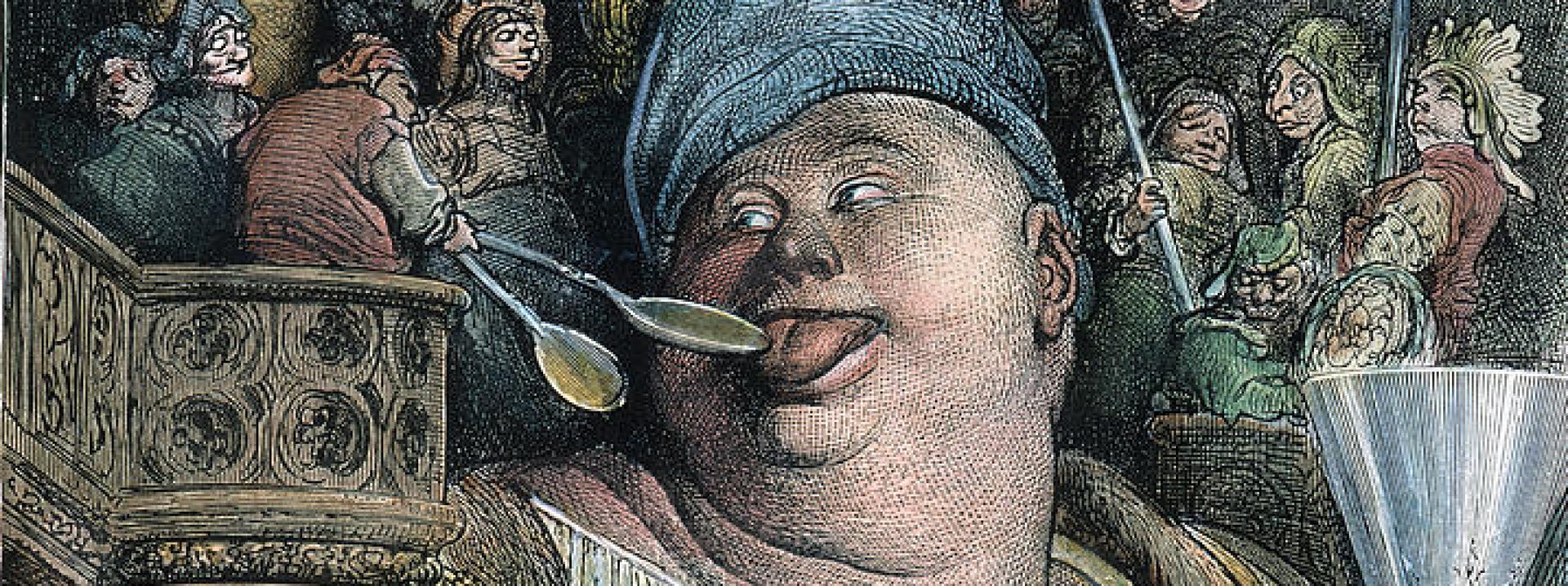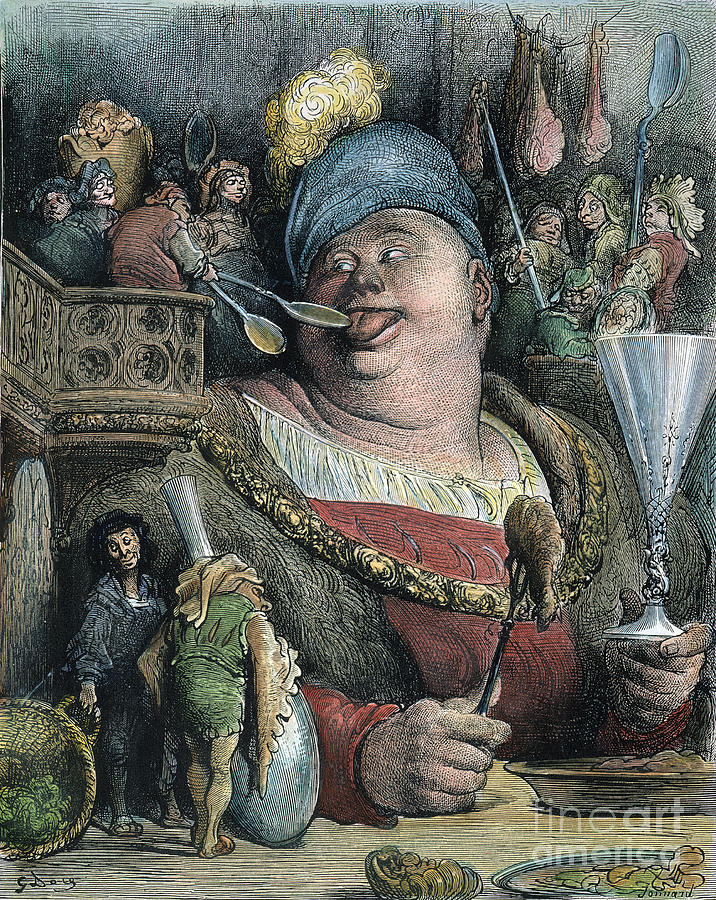Hello everyone! For my final I chose to do a critical essay of Fellini-Satyricon from the perspective of Bakhtin pages 377-400. I found this film really fascinating and difficult to work through the first time around, so I was excited to be able to work with it again from this perspective! Below is my essay:
In Rabelais and His World, Bakhtin puts forth a lens of literary interpretation through which to understand the works of Rabelais as paradigmatic texts of the Grotesque and Carnivalesque– but Bakhtin’s ideas can be applied to a much wider range of works and artists as well. Federico Fellini’s 1969 Satyricon film is one such work, and we can use Bakhtin’s analysis of Rabelais to identify the Grotesque and Carnivalesque overtones in this film. In particular, in the first half of Chapter 6 of Rabelais and His World, Bakhtin expounds the relationship of the Grotesque body and Carnival atmosphere with death and the underworld. Likewise in Fellini-Satyricon, the ‘lower bodily stratum’ functions and interacts continually within the lower stratum of the earth or in spaces representative of the underworld, creating a Grotesquely cyclical association between the living, productive body, death, and the underground.
One key element of the Grotesque, according to Bakhtin, is the celebration of the lower body as a symbol of life, fertility, and productivity. He explains, for instance, “The material bodily lower stratum is productive. It gives birth, thus assuring mankind’s immortality. All obsolete and vain illusions die in it, and the real future comes to life” (378). The Grotesque body connects one to the earth and natural world by taking it in and contributing to it through production. Fellini-Satyricon explores this aspect of the Grotesque body as well, as the body in this film is at its most productive when it is connected with the underground and with the natural world. Some of the final scenes of the film recount a story of a woman, Oenothea, who rejects the advances of an old wizard. The wizard then extinguishes all of the fire in the land and tells the people that it is “hidden beneath Oenothea’s skirt,” and the people line up to retrieve the fire from her body. This story in itself is a representation of the lower bodily stratum producing and directly interacting with natural elements such as fire; however, Oenothea also plays a role in Encolio’s story, when he visits her years later in a cave in order to cure his impotence. This section of Oenothea’s story is equally representative of Bakhtin’s ideas, as the life-giving nature of the lower body is associated with the underground setting of the cave.
Bakhtin’s connection of the Grotesque body with the physical underground or underworld extends beyond the body itself; he also discusses the degradation of the spirit and soul through the lower bodily stratum as well. He writes, “The parody of the medieval topography is obvious; the soul’s beatitude is deeply immersed in the body’s lowest stratum” (378). In Fellini-Satyricon, the soul’s beatitude is immersed not only in the body’s lowest stratum, but in the earth’s lowest stratum as well. For instance, Encolpio and Ascylto kidnap a child who is said to be a divine oracle. The oracle lives in a seemingly underground place and is presumed to heal ailing visitors. However, the child dies when brought above ground into the sunlight by Encolpio and Ascylto. This sequence degrades the divine body through the idea of holiness that can only survive in the earth’s lower stratum, and, similar to the story of Oenothea, this scene suggests a direct connection between life and productivity and the underground.
Chapter 6 of Rabelais and His World discusses not only the underground, but also how literal depictions of hell and the underworld represent the Grotesque and Carnivalesque. Bakhtin argues, “Hell is a banquet and a gay carnival. We find here all the familiar debasing ambivalent images of drenching in urine, beating, travesty, abuse” (386). In this section, Bakhtin analyses a scene in Pantagruel in which a man named Epistemon is resurrected and describes the afterlife. Epistemon explains that hell is not necessarily a torturous place, but instead is a place where people engage in activities and professions opposite of those that they were known to engage in in life. This depiction of the underworld as a Carnivalesque inversion of societal roles and hierarchy is evident also in Fellini-Satyricon, particularly during the dinner at Trimalchio’s. The dinner at Trimalchio’s has been interpreted as a representation of hell, which culminates in a parody funeral for Trimalchio. In this part of the scene in particular, a large Carnivalesque feast is accompanied by images and reminders of death and the underworld; however, even as Trimalchio lies underground and feigns death, the scene remains joyful and without real consequence to the party. Furthermore, this scene as a depiction of hell is consistent with Epistemon’s vision of the underworld, as the inversion of hierarchies can be seen in the way that Trimalchio, a former slave, now has abundant power and wealth.
In this way we can understand Fellini-Satyricon as an example of Bakhtin’s ideas of the Grotesque and Carnivalesque as they relate to hell and the underworld in Rabelais and His World Chapter 6. The underground in this film, normally associated with death, is instead a vehicle for life and productivity, using the structure of the natural world to reflect the productivity of the lower half of the Grotesque body as expressed in Bakhtin’s writing. This connection of the productive lower bodily stratum to nature and the underground further culminates in a Carnivalesque celebration of death and the underworld, as expressed by the lightheartedness of the funeral parody that ends the dinner at Trimalchio’s. Through the lens of Bakhtin’s Chapter 6, Fellini-Satyricon can be viewed as a Grotesque and Carnivalesque work that connects both the body and the soul to death and the underworld.


I found your topic and analysis really fascinating! Watching the film at times felt like a hellish landscape of confusion and complete disorientation, so I’m glad you defended (and convinced me of) the intentionality and purpose of scenes like Trimalchio’s dinner and the divine child. I wonder if it would be worthwhile to further explore the reasoning that death and the underground as themes pertaining to landscape represent carnival in the way that they do. Perhaps it’s something about how the in the classical tradition, everyone ends up in the Underworld–albeit, some to nicer parts than others–after they die regardless of the life they lived. The Underworld is sort of like a carnival in and of itself where everyone is brought in on an equal playing field until they are judged, and your argument that Trimalchio’s dinner is representative of hell reflects that: everyone dines together, no matter their social class.
This is a fascinating connection that you’ve identified between the body and the underworld, and is a perspective that I did not consider when watching the movie. Similarly, I was caught up in the chaos of the movie. I think it’s an interesting comparison to draw that the underworld in this case is a place for productivity that feeds into a carnivalesque atmosphere. The underworld in this work is, as you pointed out, strikingly filled with a sense of life which contradicts conventional notions of what its function Is. Thinking back to the novel and the movies depiction there is something so chaotic, carnivalesque, and lively about the underworld especially in the feasting scenes
I really enjoyed this movie and I’m glad someone chose to discuss it more. I’m glad you discussed how intentional many of the Fellini’s decisions were. I also think this helps me better understand some similar movies I have seen (including The Lighthouse which I watched this semester). I also like the comparisons between Fellini’s Hell and Rabelais’ Hell, which I found really interesting.